-
 Bitcoin
Bitcoin $83,660.2983
4.75% -
 Ethereum
Ethereum $1,570.3051
3.00% -
 Tether USDt
Tether USDt $0.9997
0.03% -
 XRP
XRP $2.0309
2.47% -
 BNB
BNB $587.3072
1.99% -
 Solana
Solana $121.3242
7.95% -
 USDC
USDC $1.0001
0.02% -
 Dogecoin
Dogecoin $0.1609
4.25% -
 TRON
TRON $0.2426
2.64% -
 Cardano
Cardano $0.6285
4.27% -
 UNUS SED LEO
UNUS SED LEO $9.3860
-0.31% -
 Chainlink
Chainlink $12.7669
5.75% -
 Avalanche
Avalanche $19.2174
5.01% -
 Toncoin
Toncoin $2.9781
0.59% -
 Stellar
Stellar $0.2358
2.73% -
 Sui
Sui $2.2182
5.76% -
 Shiba Inu
Shiba Inu $0.0...01223
5.14% -
 Hedera
Hedera $0.1686
-0.26% -
 Bitcoin Cash
Bitcoin Cash $310.9715
6.59% -
 MANTRA
MANTRA $6.4174
-0.01% -
 Litecoin
Litecoin $76.6710
4.53% -
 Polkadot
Polkadot $3.5705
3.14% -
 Dai
Dai $1.0000
0.01% -
 Hyperliquid
Hyperliquid $15.6953
10.18% -
 Bitget Token
Bitget Token $4.3286
2.65% -
 Ethena USDe
Ethena USDe $0.9988
0.02% -
 Pi
Pi $0.6144
4.72% -
 Monero
Monero $205.9650
2.32% -
 Uniswap
Uniswap $5.2642
4.91% -
 OKB
OKB $53.5200
1.51%
What does blockchain mining mean and what is the difficulty bomb of mining?
Blockchain mining secures networks and introduces new coins, but Ethereum's difficulty bomb aims to shift to energy-efficient PoS, impacting miners' profitability and network dynamics.
Apr 04, 2025 at 05:01 am
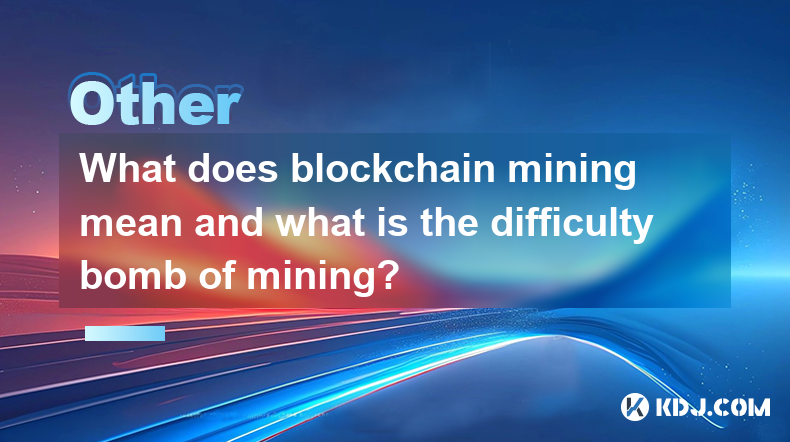
Blockchain mining is a critical process in the world of cryptocurrencies, particularly for those operating on proof-of-work (PoW) blockchains like Bitcoin and Ethereum. Mining involves solving complex mathematical problems to validate transactions and add them to the blockchain. Miners use powerful computers to compete in solving these problems, and the first to solve it gets to add a new block to the chain and is rewarded with cryptocurrency. This process not only secures the network but also introduces new coins into circulation. The difficulty of these problems adjusts periodically to maintain a consistent block time, typically every 10 minutes for Bitcoin.
How Does Blockchain Mining Work?
Blockchain mining is essentially a competition among miners to solve a cryptographic puzzle. Each miner takes a set of transactions from the mempool, combines them into a block, and then tries to find a hash that meets the network's difficulty target. This hash must be below a certain value, which is adjusted to control the rate at which new blocks are added to the blockchain. Miners use specialized hardware, such as ASICs (Application-Specific Integrated Circuits), to perform these calculations efficiently. The first miner to find a valid hash broadcasts it to the network, and if other nodes verify it, the block is added to the blockchain, and the miner is rewarded.
What is the Role of Miners in the Blockchain Ecosystem?
Miners play a crucial role in maintaining the integrity and security of the blockchain. By validating transactions, they prevent double-spending and ensure that the ledger remains accurate. Additionally, miners contribute to the decentralized nature of the network by distributing the power to validate transactions across many participants. This decentralization is a key feature of cryptocurrencies, as it reduces the risk of a single point of failure or manipulation. Miners are also incentivized to act honestly, as they receive rewards for their efforts, which helps to align their interests with the overall health of the network.
What is the Difficulty Bomb in Mining?
The difficulty bomb is a mechanism introduced in the Ethereum blockchain to transition from proof-of-work (PoW) to proof-of-stake (PoS). It is designed to increase the difficulty of mining over time, making it progressively harder to mine new blocks. The purpose of the difficulty bomb is to encourage the Ethereum community to switch to a more energy-efficient consensus mechanism, as PoS does not require the same level of computational power as PoW. The difficulty bomb was initially set to trigger a significant increase in mining difficulty, but its implementation has been delayed multiple times to allow for further development and testing of the PoS system.
How Does the Difficulty Bomb Affect Miners?
The difficulty bomb poses a significant challenge for miners on the Ethereum network. As the difficulty of mining increases, the time it takes to mine a new block also increases, which can lead to slower transaction processing times and reduced rewards for miners. This can make mining less profitable and may drive some miners away from the network. However, the difficulty bomb is intended to be a temporary measure to facilitate the transition to PoS, after which mining as we know it will no longer be necessary. Miners who adapt to the new system by becoming validators in the PoS network can continue to participate and earn rewards.
What Are the Implications of the Difficulty Bomb for the Ethereum Network?
The difficulty bomb has several implications for the Ethereum network. Firstly, it serves as a catalyst for the transition to PoS, which is expected to improve the scalability and energy efficiency of the network. Secondly, it may lead to a temporary period of instability as miners adjust to the increasing difficulty and potentially reduced rewards. However, the Ethereum community has been working on solutions to mitigate these effects, such as implementing a gradual increase in difficulty rather than a sudden spike. Ultimately, the difficulty bomb is a strategic move to ensure the long-term sustainability and growth of the Ethereum network.
How Can Miners Prepare for the Difficulty Bomb?
Miners can take several steps to prepare for the difficulty bomb and the transition to PoS:
- Stay informed about the latest developments and timelines for the Ethereum network's transition.
- Consider diversifying their mining operations to include other cryptocurrencies that may not be affected by the difficulty bomb.
- Invest in hardware that can be repurposed for other uses or sold if mining becomes unprofitable.
- Learn about the PoS system and consider becoming a validator on the Ethereum network once the transition is complete.
- Participate in the Ethereum community and contribute to discussions and decisions regarding the transition.
What Are the Alternatives to Proof-of-Work?
Proof-of-work is not the only consensus mechanism used in blockchain networks. Proof-of-stake (PoS) is a popular alternative that selects validators based on the number of coins they hold and are willing to "stake" as collateral. PoS is more energy-efficient than PoW and is being adopted by several major cryptocurrencies, including Ethereum. Other alternatives include:
- Delegated Proof-of-Stake (DPoS), where token holders vote for a small number of delegates to validate transactions.
- Proof-of-Authority (PoA), where a set of pre-approved validators are responsible for adding new blocks to the chain.
- Proof-of-Capacity (PoC), where the mining power is determined by the amount of storage space a miner dedicates to the network.
What Are the Challenges of Transitioning from PoW to PoS?
Transitioning from PoW to PoS presents several challenges. One major issue is the potential centralization of power, as those with more coins can have a greater influence on the network. This could lead to a form of plutocracy, where the wealthy have more control over the blockchain. Additionally, the transition requires significant changes to the underlying protocol, which can be complex and time-consuming to implement. There are also concerns about the security of PoS systems, as they may be more vulnerable to certain types of attacks, such as the "nothing at stake" problem, where validators can vote for multiple conflicting versions of the blockchain without incurring significant costs.
How Does the Difficulty Bomb Impact the Broader Cryptocurrency Market?
The difficulty bomb and the transition to PoS on the Ethereum network can have broader implications for the cryptocurrency market. As one of the largest and most influential cryptocurrencies, changes to Ethereum's consensus mechanism can set a precedent for other networks. The transition may lead to increased interest in PoS and other energy-efficient consensus mechanisms, potentially driving innovation and competition in the space. However, it can also cause short-term volatility and uncertainty, as investors and miners adjust to the new system. The overall impact will depend on how smoothly the transition is executed and how well the Ethereum community adapts to the changes.
What Are the Future Prospects for Blockchain Mining?
The future of blockchain mining is likely to be shaped by the ongoing shift towards more sustainable and efficient consensus mechanisms. While PoW will continue to be used by some cryptocurrencies, the trend towards PoS and other alternatives is expected to grow. This could lead to a decline in the demand for mining hardware and a shift in the skills and resources required to participate in blockchain networks. However, mining will remain an important part of the cryptocurrency ecosystem, and those who adapt to the changing landscape can continue to play a vital role in securing and maintaining these networks.
What Are the Environmental Concerns Associated with Blockchain Mining?
Blockchain mining, particularly PoW mining, has raised significant environmental concerns due to its high energy consumption. The process requires vast amounts of electricity to power the computers that solve the cryptographic puzzles, leading to a large carbon footprint. This has prompted calls for more sustainable practices within the cryptocurrency industry. Some miners are turning to renewable energy sources, such as solar and wind power, to reduce their environmental impact. Additionally, the transition to PoS and other energy-efficient consensus mechanisms is seen as a way to address these concerns and make blockchain technology more environmentally friendly.
How Can Miners Mitigate the Risks of the Difficulty Bomb?
Miners can mitigate the risks associated with the difficulty bomb by taking proactive steps to adapt to the changing landscape. This includes:
- Monitoring the Ethereum network's progress towards the PoS transition and adjusting their strategies accordingly.
- Exploring opportunities to mine other cryptocurrencies that may offer more stable rewards.
- Investing in energy-efficient mining hardware and exploring renewable energy sources to reduce operational costs.
- Engaging with the Ethereum community and participating in discussions about the transition to stay informed and influence the process.
- Diversifying their income streams by exploring other roles within the cryptocurrency ecosystem, such as trading or developing decentralized applications.
What Are the Economic Implications of the Difficulty Bomb?
The difficulty bomb can have significant economic implications for miners and the broader cryptocurrency market. As mining becomes more difficult and potentially less profitable, some miners may exit the market, leading to a reduction in the network's hash rate. This could result in slower transaction processing times and increased fees for users. However, the transition to PoS is expected to bring long-term benefits, such as reduced energy costs and increased scalability, which could drive greater adoption and investment in the Ethereum network. The economic impact will depend on how well the transition is managed and how quickly the market adapts to the new system.
What Are the Technical Challenges of Implementing the Difficulty Bomb?
Implementing the difficulty bomb presents several technical challenges. One major issue is ensuring that the increase in difficulty is gradual and predictable, to avoid sudden disruptions to the network. This requires careful calibration of the difficulty adjustment algorithm and ongoing monitoring to ensure it is working as intended. Additionally, the Ethereum development team must coordinate with miners and other stakeholders to ensure a smooth transition to PoS. This involves testing and refining the new consensus mechanism, as well as addressing any security vulnerabilities that may arise during the transition. The technical challenges are significant, but the Ethereum community is working diligently to overcome them.
What Are the Social and Political Implications of the Difficulty Bomb?
The difficulty bomb and the transition to PoS can have social and political implications within the cryptocurrency community. The shift in consensus mechanisms can lead to debates and disagreements about the future direction of the Ethereum network. Some miners and stakeholders may resist the change, leading to potential forks or splits in the community. Additionally, the transition to PoS could raise questions about the distribution of power and influence within the network, as those with more coins may have a greater say in decision-making. These social and political dynamics will play a crucial role in shaping the outcome of the transition and the future of the Ethereum ecosystem.
What Are the Potential Benefits of the Difficulty Bomb?
The difficulty bomb, despite its challenges, offers several potential benefits for the Ethereum network. By encouraging the transition to PoS, it can help to reduce the energy consumption associated with mining, making the network more sustainable. Additionally, PoS is expected to improve the scalability of the network, allowing for faster transaction processing and lower fees. The difficulty bomb also serves as a mechanism to drive innovation and development within the Ethereum community, as it pushes stakeholders to work together to implement a more efficient consensus mechanism. These benefits could position Ethereum for long-term growth and success in the competitive cryptocurrency market.
What Are the Risks of Delaying the Difficulty Bomb?
Delaying the difficulty bomb carries several risks for the Ethereum network. Prolonged use of PoW can lead to continued high energy consumption and environmental impact, which may deter potential users and investors. Additionally, delays can create uncertainty and instability within the network, as miners and other stakeholders may be unsure about the future direction of the project. This could lead to reduced participation and investment, potentially slowing down the development and adoption of Ethereum. Furthermore, delays may allow competing projects to gain ground, as they may be quicker to implement more efficient consensus mechanisms. Balancing the need for a smooth transition with the urgency of moving away from PoW is a key challenge for the Ethereum community.
What Are the Key Considerations for Miners During the Transition?
Miners facing the transition from PoW to PoS must consider several key factors. Firstly, they need to assess the potential impact on their profitability and decide whether to continue mining or explore other opportunities within the cryptocurrency ecosystem. Secondly, miners should stay informed about the timeline and details of the transition, as this will help them plan their next steps. Thirdly, they may need to invest in new hardware or skills to participate in the PoS network as validators. Finally, miners should engage with the Ethereum community and contribute to the transition process, as their input and participation can help ensure a successful outcome for the network.
What Are the Common Questions Related to Blockchain Mining and the Difficulty Bomb?
Q: What is blockchain mining?
A: Blockchain mining is the process of validating transactions and adding them to the blockchain by solving complex mathematical problems. Miners compete to find a valid hash that meets the network's difficulty target, and the first to do so is rewarded with cryptocurrency.
Q: How does the difficulty bomb work?
A: The difficulty bomb is a mechanism designed to increase the difficulty of mining over time on the Ethereum network. It aims to encourage the transition from proof-of-work to proof-of-stake by making mining progressively harder and less profitable.
Q: What are the implications of the difficulty bomb for miners?
A: The difficulty bomb can make mining less profitable and may drive some miners away from the Ethereum network. However, it is intended to be a temporary measure to facilitate the transition to PoS, after which miners can become validators and continue to participate in the network.
Q: How can miners prepare for the difficulty bomb?
A: Miners can prepare for the difficulty bomb by staying informed about the transition, diversifying their mining operations, investing in adaptable hardware, learning about PoS, and participating in the Ethereum community.
Q: What are the alternatives to proof-of-work?
A: Alternatives to proof-of-work include proof-of-stake, delegated proof-of-stake, proof-of-authority, and proof-of-capacity. These consensus mechanisms are generally more energy-efficient and are being adopted by various blockchain networks.
Q: What are the environmental concerns associated with blockchain mining?
A: Blockchain mining, particularly PoW mining, consumes a significant amount of electricity, leading to a large carbon footprint. This has raised concerns about the environmental impact of cryptocurrencies, prompting a shift towards more sustainable consensus mechanisms.
Q: What are the economic implications of the difficulty bomb?
A: The difficulty bomb can lead to reduced profitability for miners and potential instability in the Ethereum network. However, the transition to PoS is expected to bring long-term economic benefits, such as reduced energy costs and increased scalability.
Q: What are the technical challenges of implementing the difficulty bomb?
A: Implementing the difficulty bomb involves calibrating the difficulty adjustment algorithm, coordinating with miners and stakeholders, testing and refining the PoS system, and addressing security vulnerabilities during the transition.
Q: What are the social and political implications of the difficulty bomb?
A: The difficulty bomb can lead to debates and disagreements within the Ethereum community about the future direction of the network. It may also raise questions about the distribution of power and influence, potentially leading to forks or splits in the community.
Q: What are the potential benefits of the difficulty bomb?
A: The difficulty bomb can help reduce the energy consumption of the Ethereum network, improve scalability, drive innovation, and position Ethereum for long-term growth and success in the cryptocurrency market.
Q: What are the risks of delaying the difficulty bomb?
A: Delaying the difficulty bomb can lead to continued high energy consumption, uncertainty and instability within the network, reduced participation and investment, and potential loss of competitive advantage to other projects implementing more efficient consensus mechanisms.
Disclaimer:info@kdj.com
The information provided is not trading advice. kdj.com does not assume any responsibility for any investments made based on the information provided in this article. Cryptocurrencies are highly volatile and it is highly recommended that you invest with caution after thorough research!
If you believe that the content used on this website infringes your copyright, please contact us immediately (info@kdj.com) and we will delete it promptly.
- Rising Treasury Yields Might Indicate a Shift in Investor Sentiment Away from United States Government Debt
- 2025-04-12 05:20:12
- As bitcoin hovers around $80,00, a burning question lingers: has the king of cryptos finally found its floor?
- 2025-04-12 05:20:12
- Mutuum Finance (MUTM) Token Quietly Gains Traction as Investors Take a Closer Look at Delivering Projects
- 2025-04-12 05:15:13
- MicroStrategy (MSTR) (formerly MicroStrategy) noted in a regulatory filing on April 7.
- 2025-04-12 05:15:13
- Bitcoin (BTC) markets are trading higher on Friday, amid Florida passing a Bitcoin reserve bill.
- 2025-04-12 05:10:12
- Lomond School to Accept Bitcoin Payments Starting Autumn 2025
- 2025-04-12 05:10:12
Related knowledge
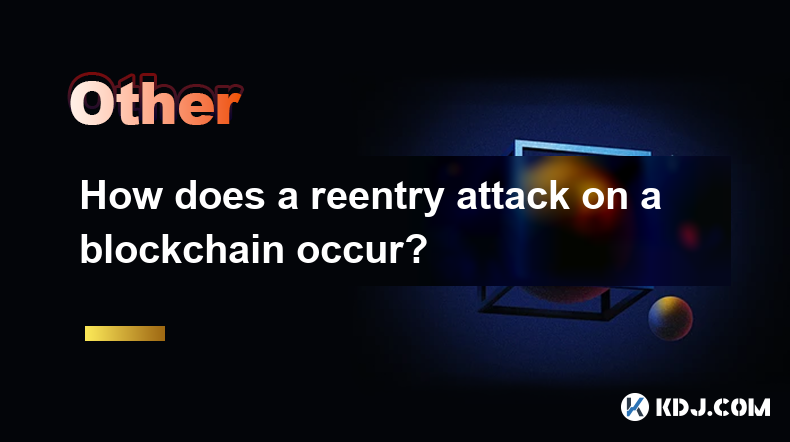
How does a reentry attack on a blockchain occur?
Apr 11,2025 at 08:21pm
Introduction to Reentry AttacksA reentry attack is a type of exploit that can occur on blockchain smart contracts, particularly those that handle financial transactions. This type of attack takes advantage of vulnerabilities in the contract's code, allowing an attacker to repeatedly call a function before the initial transaction is completed. Understand...
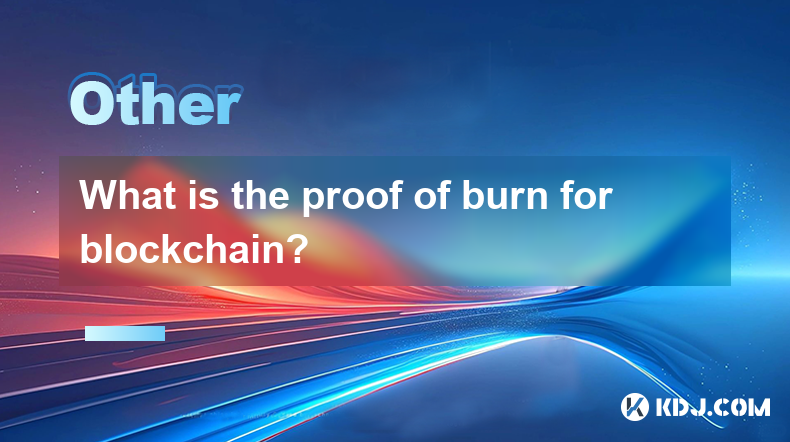
What is the proof of burn for blockchain?
Apr 12,2025 at 04:49am
Introduction to Proof of BurnProof of Burn (PoB) is a consensus mechanism used in blockchain networks that serves as an alternative to more common methods like Proof of Work (PoW) and Proof of Stake (PoS). In the context of cryptocurrencies, PoB is designed to incentivize network participants to 'burn' or permanently destroy a certain amount of cryptocu...
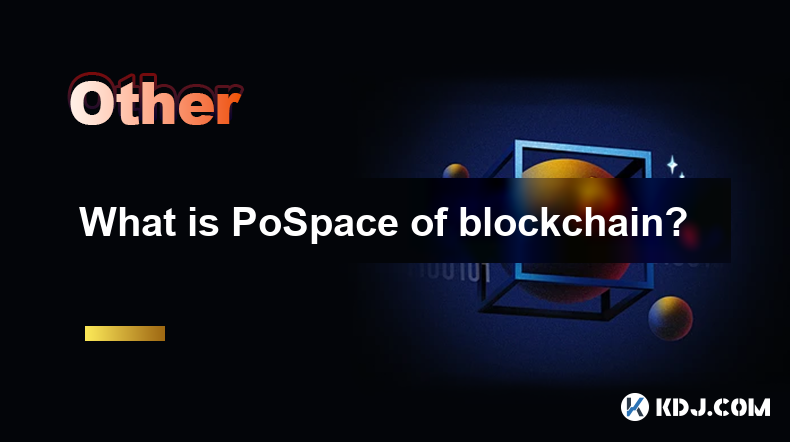
What is PoSpace of blockchain?
Apr 12,2025 at 05:42am
What is PoSpace of blockchain?Proof of Space (PoSpace) is an innovative consensus mechanism used in blockchain technology that leverages the unused storage space on participants' hard drives to validate transactions and secure the network. Unlike Proof of Work (PoW), which requires significant computational power, or Proof of Stake (PoS), which relies o...
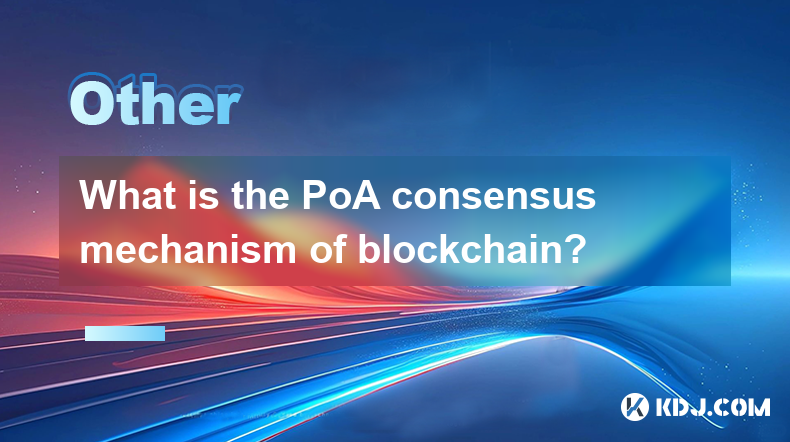
What is the PoA consensus mechanism of blockchain?
Apr 11,2025 at 09:14pm
The Proof of Authority (PoA) consensus mechanism is a significant part of blockchain technology, designed to enhance efficiency and security in certain types of networks. PoA is particularly useful in private or consortium blockchains where the identity of the validators is known and trusted. This mechanism relies on a set of pre-approved validators, kn...
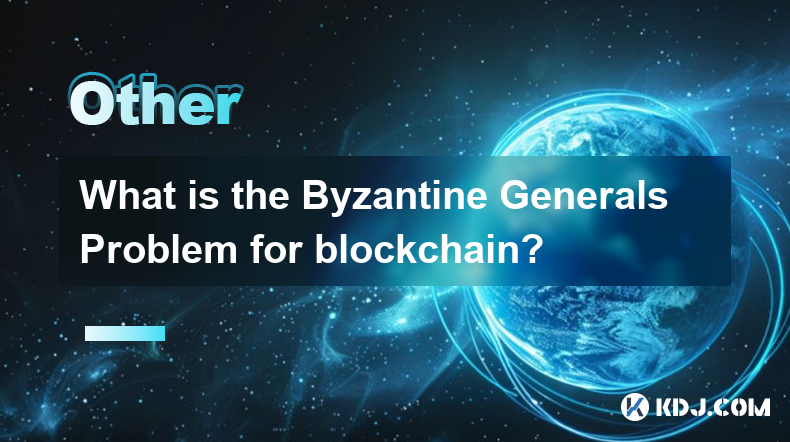
What is the Byzantine Generals Problem for blockchain?
Apr 12,2025 at 03:29am
The Byzantine Generals Problem is a classic concept in computer science that has significant implications for the blockchain and cryptocurrency space. In essence, it describes a scenario where multiple parties must coordinate their actions to achieve a common goal, but some parties may be unreliable or malicious. In the context of blockchain, understand...
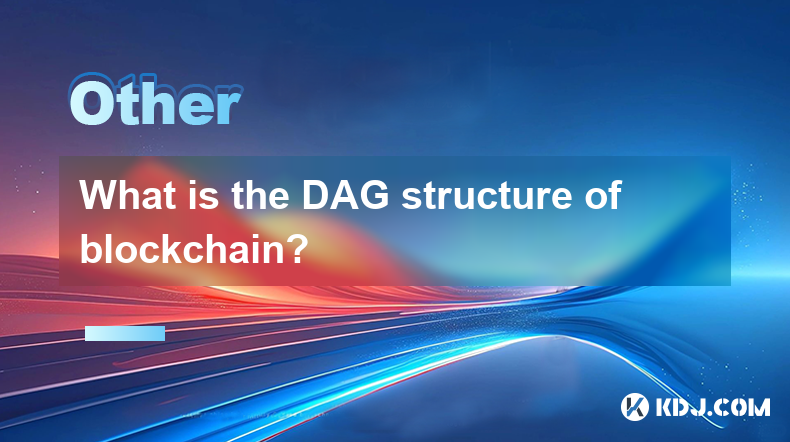
What is the DAG structure of blockchain?
Apr 11,2025 at 07:50pm
The Directed Acyclic Graph (DAG) structure represents a unique approach to blockchain technology, diverging from the traditional linear chain of blocks. In a DAG-based system, transactions are linked in a way that forms a graph, where each node represents a transaction, and the edges represent the direction of the transaction references. This structure ...

How does a reentry attack on a blockchain occur?
Apr 11,2025 at 08:21pm
Introduction to Reentry AttacksA reentry attack is a type of exploit that can occur on blockchain smart contracts, particularly those that handle financial transactions. This type of attack takes advantage of vulnerabilities in the contract's code, allowing an attacker to repeatedly call a function before the initial transaction is completed. Understand...

What is the proof of burn for blockchain?
Apr 12,2025 at 04:49am
Introduction to Proof of BurnProof of Burn (PoB) is a consensus mechanism used in blockchain networks that serves as an alternative to more common methods like Proof of Work (PoW) and Proof of Stake (PoS). In the context of cryptocurrencies, PoB is designed to incentivize network participants to 'burn' or permanently destroy a certain amount of cryptocu...

What is PoSpace of blockchain?
Apr 12,2025 at 05:42am
What is PoSpace of blockchain?Proof of Space (PoSpace) is an innovative consensus mechanism used in blockchain technology that leverages the unused storage space on participants' hard drives to validate transactions and secure the network. Unlike Proof of Work (PoW), which requires significant computational power, or Proof of Stake (PoS), which relies o...

What is the PoA consensus mechanism of blockchain?
Apr 11,2025 at 09:14pm
The Proof of Authority (PoA) consensus mechanism is a significant part of blockchain technology, designed to enhance efficiency and security in certain types of networks. PoA is particularly useful in private or consortium blockchains where the identity of the validators is known and trusted. This mechanism relies on a set of pre-approved validators, kn...

What is the Byzantine Generals Problem for blockchain?
Apr 12,2025 at 03:29am
The Byzantine Generals Problem is a classic concept in computer science that has significant implications for the blockchain and cryptocurrency space. In essence, it describes a scenario where multiple parties must coordinate their actions to achieve a common goal, but some parties may be unreliable or malicious. In the context of blockchain, understand...

What is the DAG structure of blockchain?
Apr 11,2025 at 07:50pm
The Directed Acyclic Graph (DAG) structure represents a unique approach to blockchain technology, diverging from the traditional linear chain of blocks. In a DAG-based system, transactions are linked in a way that forms a graph, where each node represents a transaction, and the edges represent the direction of the transaction references. This structure ...
See all articles























































































